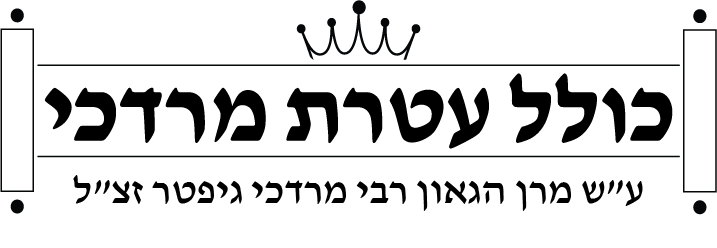Kzos, Nesivos … and College
Submitted to a publication anonymously as “Observer” by HaRav Mordechai Gifter, zt”l.
There is a tendency in American culture, and Western culture in general, that youth understands the problems of present day living better than their elders. The tendency reaches its extreme in the inhuman outbursts on the academic campus and in various other manifestations such as Chicago’s “trial of the seven.”
There is a spill-over of this tendency in the world of Orthodox Judaism. It manifests itself in continuous outbursts of young men in the American rabbinate against the wisdom of their mentors, the Roshei Hayeshiva. The Yiddish press of February 5 carried a report of such a critical diatribe delivered at a convention of an Orthodox Rabbinical organization usually identified as committed to the Torah viewpoint of their mentors. Since the reporter is, as far as journalism goes, considered reliable, we assume that the report was more or less accurate.
The thesis of the criticism was that since it is an established fact that the major portion of Yeshiva High School graduates go on to College the Roshei Hayeshivas should gear the Torah curriculum to become College preparatory in essence.Torah as it is now taught produces a High School graduate who is ill prepared to meet the intellectual and emotional challenge of College and the College environment. The Yeshiva High School student should be given courses in “Hashkofah” to combat the philosophies injected into him at College. “The Roshei Hayeshivas could well forego an additional Kzos or Nesivos and rather devote the time to “Hashkofah” which will prepare the student for the challenge of the College campus.”
The young rabbi who delivered this sage advice to his mentors is, himself, a product of one of the great American Yeshivas where Kzos and Nesivos are important ingredients of the curricular nourishment. The newspaper report does not tell us whether the young man also presented a suggested curriculum to tell his mentors what amount of Kzos and Nesivos is necessary in conjunction with Hashkofah; what is to be the content of the Hashkofah course to be given to teenagers which will fortify them against the onslaughts of Minus and Kfiroh indelibly impressed upon him in an environment of the lust and passion of hippie drug addicts and radicals. The young man doesn’t seem to realize that every Kzos and Nesivos as every word in the study of Torah is an injection of Torah vitamin to fortify the human soul against the never ending challenge of the Yezer Horah. Nor does he seem to be aware of the fact that every rebbe in a Yeshiva High School, worth his salt, is engaged in imparting inspiration for Torah and Torah living to the student in various and many forms. Every Yeshiva of value gives its students “mussar shmusen” dealing with the problems of the human ego and psyche relevant to the milieu of modern living. But with all the Torah and Hashkofah possible for a youngster of seventeen or eighteen, in the American scene, how can he possibly combat what is impressed upon him at College?
Usually these critical diatribes against their mentors come from young men who left the Yeshiva with their Smicha diploma just about the time when they were getting set on the road to Sinai. They then went on to become gloriously impressed with secular learning and culture and continued on the road to Sinai. But it was no more to Har Sinai – Mount Sinai, but rather to Midbar Sinai – the Desert of Sinai, to be lost and confused in conflicting cultures. The best way to justify such confusion is to place the blame with the Roshei Hayeshivas.
These young men are usually engaged in spouting forth their lectures in what they call hashkofah. A fat portion of the Christian theology of Soren Kirkegaard, a quotation from Tillich, a pinch of the Conservative Jewish “rebbe” Heshel, a quote from Chasam Sofer al Ha-Torah, all this injected with a misunderstood Maamar Chazal, and we have the concoction called Hashkofah and attributed to Rabbi Samson Raphael Hirsch Z” L. This is the hashkofah which they feel will fortify an eighteen-year-old youngster against the loss of his Torah identity.
The same rabbi suggested in his talk that the specific rabbinic organization he was addressing become a “centrist” organization between the “Orthodox left” and the “Orthodox right.” These terms are in themselves alien to Torah and taken from the secular world and its philosophies and ideologies. Torah Jewish life had Chilukei de’os but never ideological differences. The Chilukei de’os were “machlokas leshem shomaim” within Torah. Today we have an “Orthodox left” which preaches reforms in the basic tenets of Emunoh. You can be Orthodox and believe that Taryag Mitzvos are not eternal in nature – Torah min Hashomaim can be the “revelation” of a Martin Buber. Woe unto the young man who aspires to be a “centrist” between such beliefs and Torah. One is reminded of what a Gadol once said. To recognize a center line one must first recognize the two extremes. If not, the centrist ends up as an extremist.
What is really needed is that such men occupying the pulpits of the American rabbinate take sabbatical leaves for a return to the Yeshiva in complete and total immersion in Torah study and contemplation. This would cleanse their hearts and sharpen their minds to be truly worthy of the responsibility they carry.
Recommended Posts
A Talmid Reflects
December 31, 2020
By an Anonymous, Loving Talmid
February 12, 2018
Advice for Parents on Chanukah
February 12, 2018

